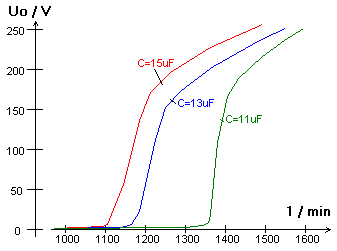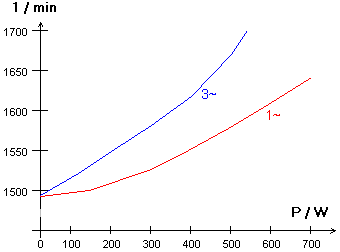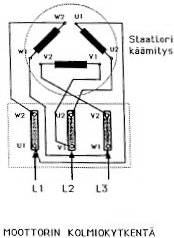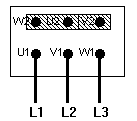
|
To catch the idea of the generator let's think first a squirrel motor in
normal motor use. When it is running without mechanical load the speed is
a bit above the synchronic speed while it is consuming only the idle current.
When the axial load increases the motor takes more current from line while
rotation speed decreases a bit (slip).
|

|
What happens then if we take away axial load and as a opposite of it puts
some external rotary power to the axle so that the motor is running equal
in synchronic speed. Then the motor needs not even the idle current from the
line.
And again, let's put more axial power and try to rotate it faster than the
synchronic speed. Then the motor begin to act as a generator and is pushing
current to line. The more we try to increase speed the more the motor
produces current to line. At same time increases the "negative slip" or the
difference to the synchronic speed.
|

|
But that's not all. The motor while acting as a generator needs some kind
of "power" from line too, namely the idle power or the reactive power. The
idle power is what it needs in both uses: as a motor and as a generator.
The effective power is what it produces as a generator while the idle power
is "free" from power plant. The effective power meter (kWh-meter) does not
register the idle power at all and normal consumers typically need not to
pay from the idle power. There is also a way to produce the idle power from
"empty" or connecting capacitors parallel to the motor terminals. Now we can
talk about a real generator which don't need external line connection to
operate.
|
If we like to use the squirrel motor as a reserve power generator then there
is no line power to use and we must use capacitors to produce the idle or
reactive power.
For comparing reasons we can think that the idle power is analogous to the
magnetization of the direct current generator.
|

|
One problem is still left when use the motor as a reserve power generator.
How to "wake" the generator or start the exciting. When the generator starts
to rotate then there is not any electrical voltage present and the capacitors
couldn't produce the idle power. There is some kind of circle around: the
voltage cannot arise if there is no voltage. If there is some amount of remanence
magnetism in the iron of the motor it can be induced a little voltage which
"wakes" the generator. But unfortunately modern motors are made of too
"good" iron so there is not remanence enought. Usually we need some extra
voltage source to start the exciting. But if we push wires from batteries
to the terminals of the running generator then we get serious troubles when
the generator suddenly wakes and rises voltages high. One way is to use a
change-over switch to charge one of the capacitors from battery and then switch
it to the generator. There must not be any electrical load connected when
waking the generator.
|
As a result the squirrel motor can act as a generator if these are fulfilled:
- the generator is getting the idle power from line or from capacitors
- there is some way to wake the exciting: remanence magnetism or
external current spike
|









